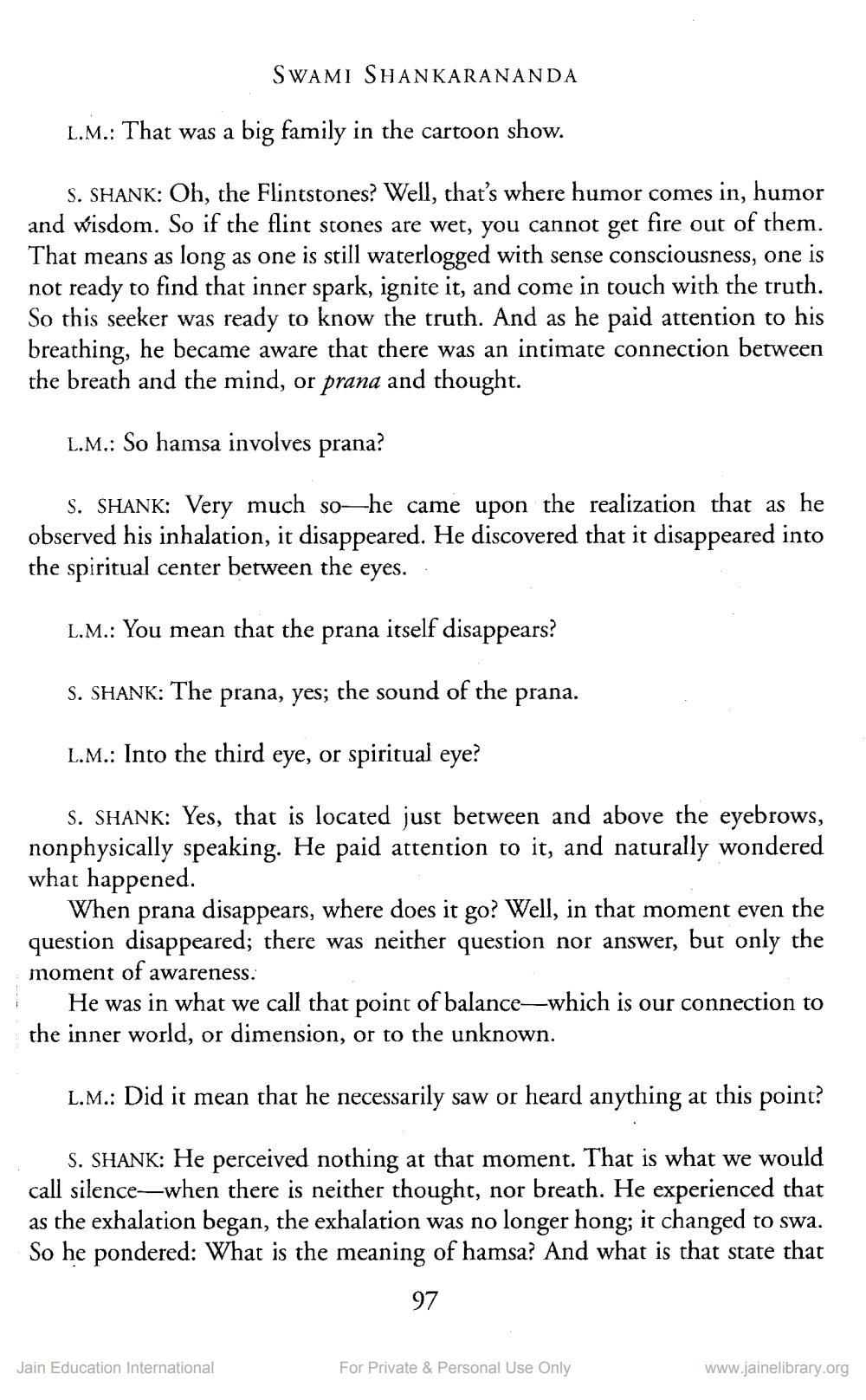________________
SWAMI SHANKARANANDA
L.M.: That was a big family in the cartoon show.
S. SHANK: Oh, the Flintstones? Well, that's where humor comes in, humor and wisdom. So if the flint stones are wet, you cannot get fire out of them. That means as long as one is still waterlogged with sense consciousness, one is not ready to find that inner spark, ignite it, and come in touch with the truth. So this seeker was ready to know the truth. And as he paid attention to his breathing, he became aware that there was an intimate connection between the breath and the mind, or prana and thought.
L.M.: So hamsa involves prana?
S. SHANK: Very much so—he came upon the realization that as he observed his inhalation, it disappeared. He discovered that it disappeared into the spiritual center between the eyes.
L.M.: You mean that the prana itself disappears?
S. SHANK: The prana, yes; the sound of the prana.
L.M.: Into the third eye, or spiritual eye?
S. SHANK: Yes, that is located just between and above the eyebrows, nonphysically speaking. He paid attention to it, and naturally wondered what happened.
When prana disappears, where does it go? Well, in that moment even the question disappeared; there was neither question nor answer, but only the moment of awareness.
He was in what we call that point of balance—which is our connection to the inner world, or dimension, or to the unknown.
L.M.: Did it mean that he necessarily saw or heard anything at this point?
S. SHANK: He perceived nothing at that moment. That is what we would call silence—when there is neither thought, nor breath. He experienced that as the exhalation began, the exhalation was no longer hong; it changed to swa. So he pondered: What is the meaning of hamsa? And what is that state that
97
97
Jain Education International
For Private & Personal Use Only
www.jainelibrary.org




